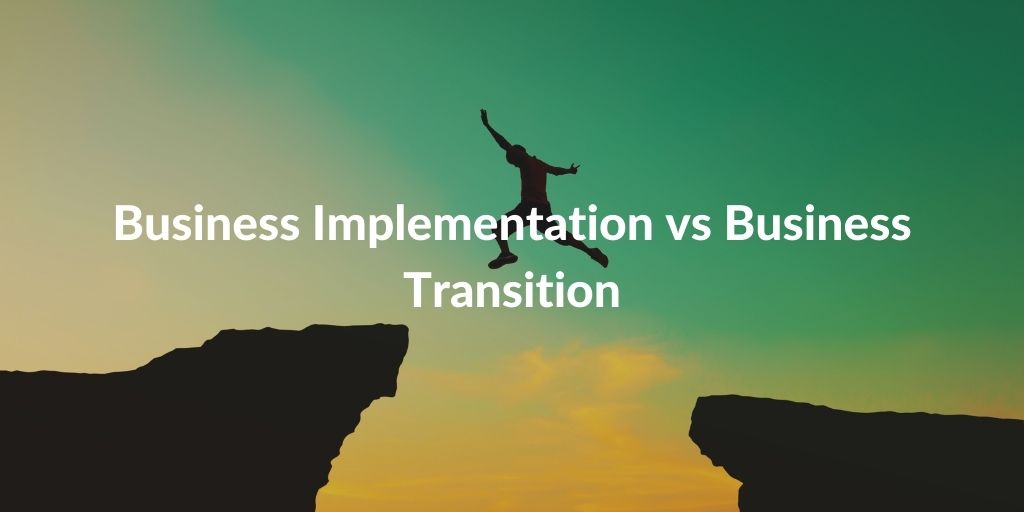Categories
Tags
Newsletter
Subscribe to the QRP International neswletter and get all the news on trends, useful contents and invitations to our upcoming events
Subscribe
We all know a project is a temporary organisational structure with the objective of creating a unique product or service (output) within certain constraints, such as time, cost and quality.
We also now that benefits are the driving force behind initiating and investing in a project. However, the benefits of a project are, in most cases, realized far beyond the project’s closure date, resulting from the business use of the project’s outputs. At this point in time, the Project Manager and Project team have finished their work on the project a long time ago.
So how to make sure an organisation will move from outputs to benefits?
A fundamental prerequisite for achieving the planned project benefits is a successful transition from project time to operational use. Planning the transition is a necessary activity but many times overlooked.
That is why the PM² methodology introduces two different processes (with related plans): Transition Management and Business Implementation Management. They both are essential for delivering the intended benefits and value of the project.
Transition ensures that the transition from the old state to the new state is done in a controlled and smooth way. It includes the management of any relevant communication activities and requires close collaboration with the Business Manager (BM) to ensure the correct transfer of project deliverables to the client organisation.
The key participants of this activity are: the Project Manager, who monitors and controls the transition, the Quality Assurance, who carries out the tasks under the leadership of the Project Manager, the Product Owner, who accepts the product before the transition is complete.
One of the main steps of the Transition Management is to ensure the Transition Plan is carried our effectively. The Transition Plan is prepared by the Project Manager during the planning phase of the PM² lifecycle.
It there is no Transition Plan the PM needs to:
The effective execution of business implementation activities is critical for smooth operations even after the project’s outputs have been delivered. Business implementation activities will almost always be required after the project has ended – that is why it is a good practice to define in advance post project change activities.
Since the implementation of these activities falls outside the project’s scope of responsibilities, they become the responsibility of the organisation and are carried out as part of ongoing operations or future projects.
The purpose of the activity is to analyse the impact of the project implementation to the on-going operations and existing business processes, the people and the culture of the organisation. This is also the time when the training needs of the people in the organisation are considered.
Key participants: Business Manager, who prepares the Business Implementation Plan, and the Project Manager, who supports the Business Manager. The Project Owner reviews and approves the Business Implementation Plan.
The Business Implementation Plan outlines the impact on the organisation and the change management activities to assure deliverables are effectively integrated into the organisation.
Benefits tracking is part of the Business Implementation Plan. It answers the question: did we achieve the expected benefits?
According to the PM² method, all the business implementation activities within the project timeline become part of the Project Work Plan and are scheduled/controlled as part of the overall project.
Transition activities ensure that the project outputs are 100% usable with minimum disruption to the business and maximum effectiveness.
Business implementation activities ensure that the project outputs are used effectively integrated into everyday work, and that the project outcomes and desired benefits are achieved.
In terms of duration, Transition activities end with the project outputs, Business Implementation activities continue until the desired benefits are reached.
Essentially, Transition deals with continuity, Business Implementation with change.
The two activities complement each other and contribute together to the achievement of project benefits. These activities are vital in ensuring that the value and benefits expected from the project are realized in the long term, and the organisation continues to operate effectively and efficiently with the changes introduced.
QRP International organises training courses on PM² Project Management methodology. QRP is part of the PM² Group, a not-for-profit membership organisation that strives to facilitate the implementation of the PM² project management methodology in public and private projects as intended by the Center of Excellence in PM² of the European Commission. QRP organises PM² Foundation courses, both on-site and virtual. Ask us for more information or watch our recorded webinar for free.
Sources: The PM² Project Management Methodology Guide 3.0.1